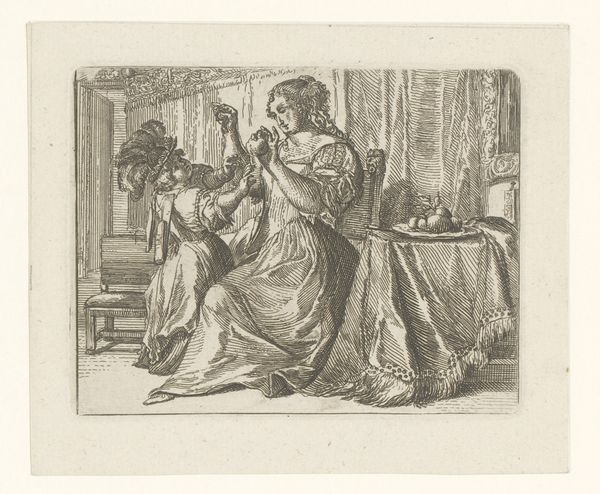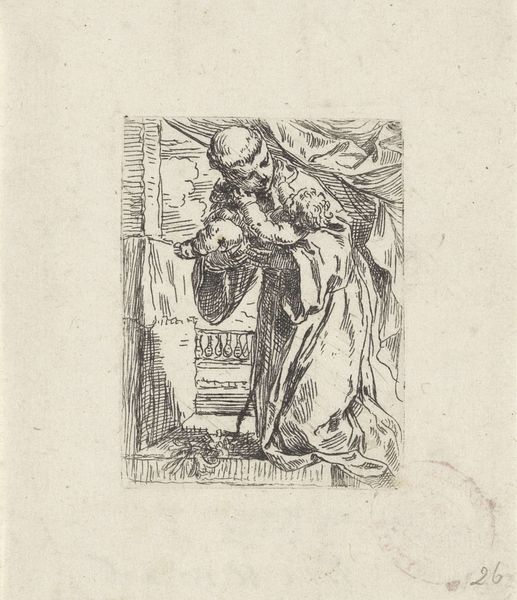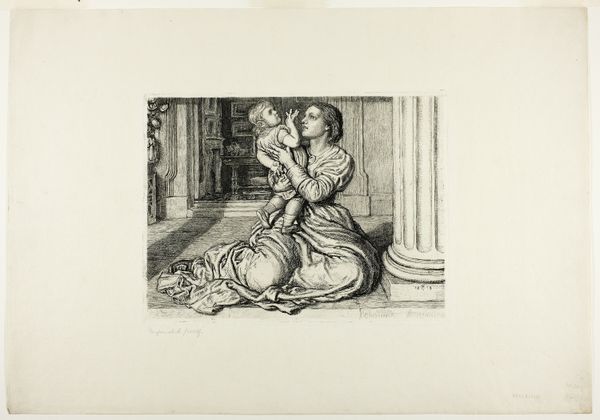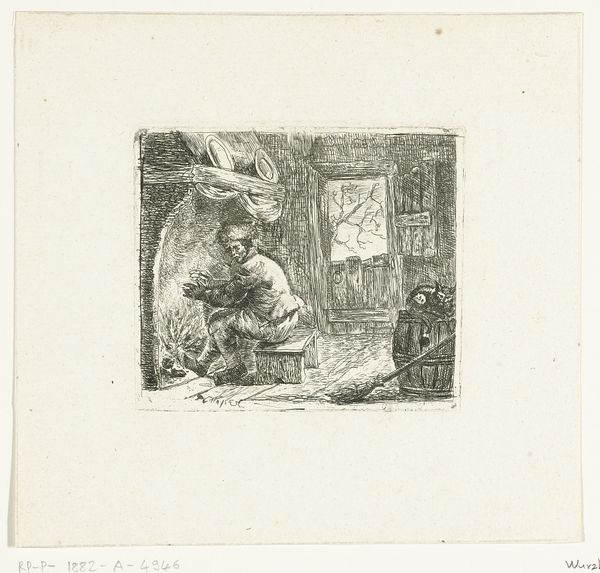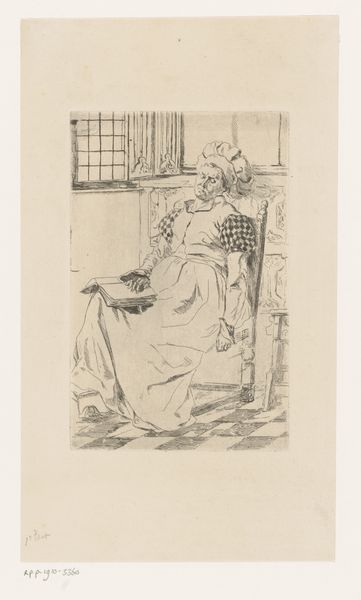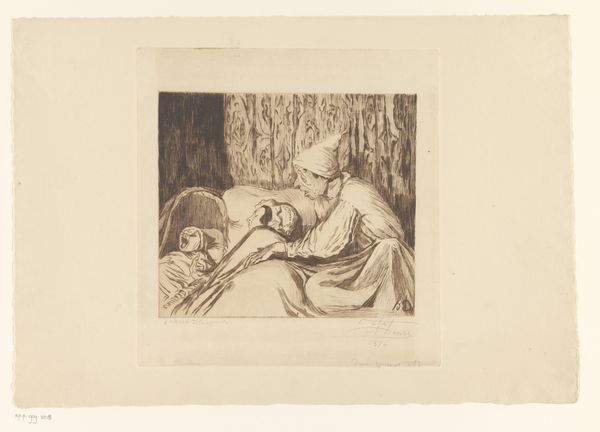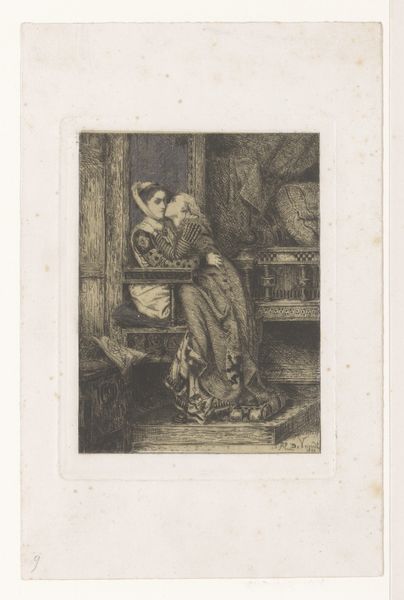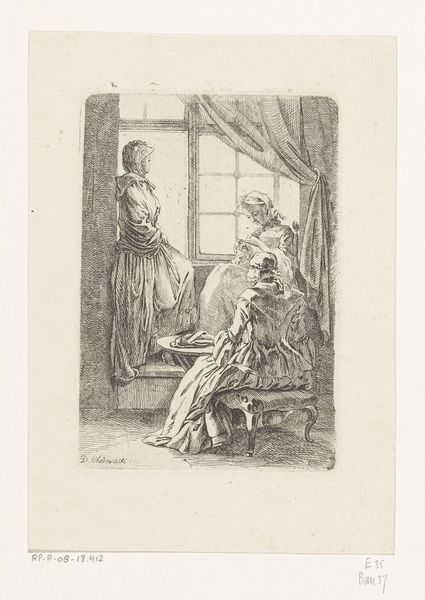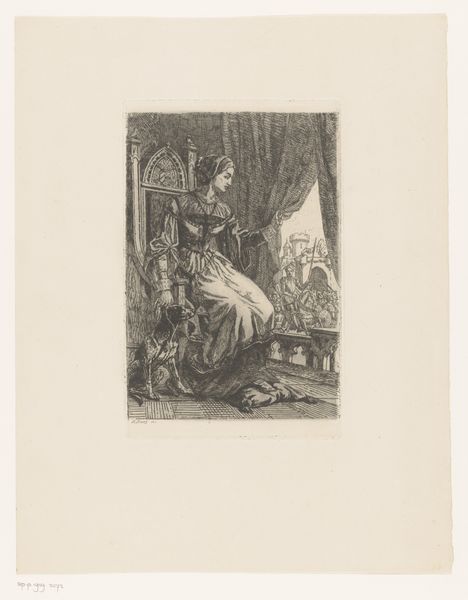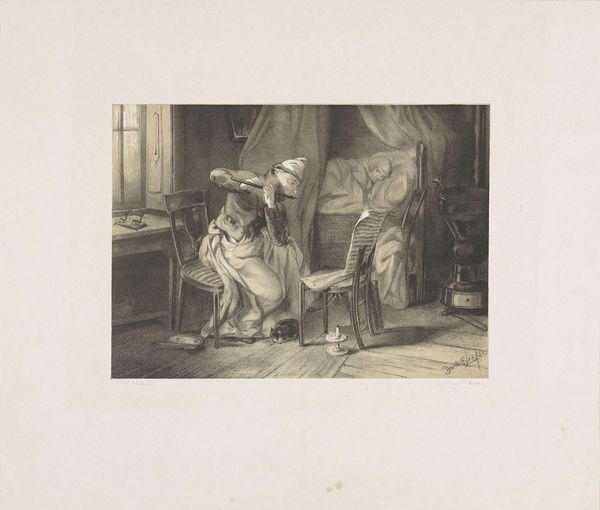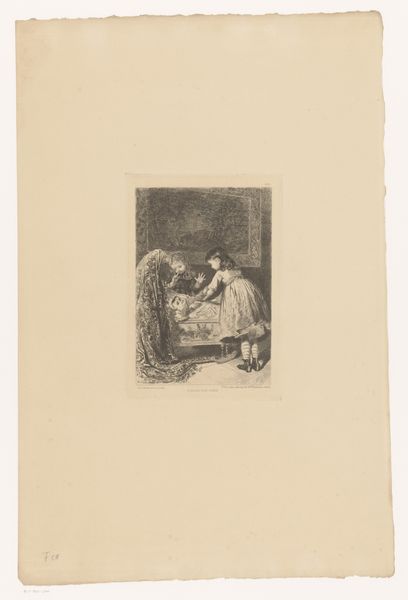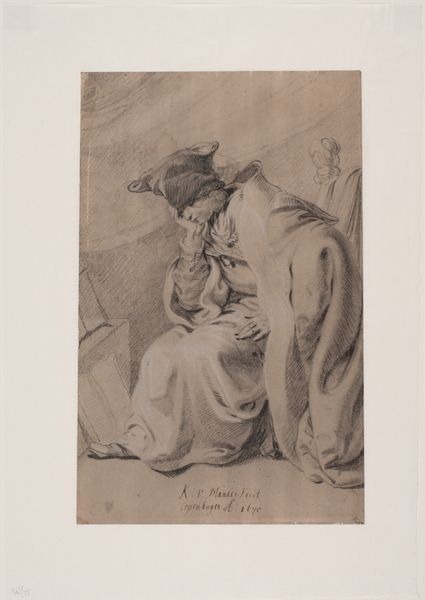
print, engraving
#
portrait
# print
#
mannerism
#
vanitas
#
engraving
Dimensions: height 79 mm, width 79 mm
Copyright: Rijks Museum: Open Domain
Editor: Here we have Enea Vico's "Ijdelheid," made between 1533 and 1567. It's an engraving, a print. The subject matter feels somber. The woman staring into the mirror... How should we interpret this image? Curator: It is somber. The "Vanitas" inscription alerts us to the theme: the emptiness and transience of earthly pursuits. Look at the objects around her—vessels, jewelry. They represent worldly possessions, yet their placement suggests impermanence, especially when viewed against the backdrop of Reformation anxieties about material culture. Where is this vanity situated? What socio-political circumstances made such subject matter resonant? Editor: So, it’s less about judging the woman’s vanity itself and more about making a statement on societal values? Are these kind of ‘morality tales’ common in art? Curator: Exactly. Remember, art in this period served a very public role, reflecting and shaping societal values. Morality tales were widespread, often used by religious institutions and political powers to reinforce certain ideologies. What do you make of the fact that it's a print? Who had access to it? Editor: That makes sense. The print would have allowed for wider circulation than an original painting, so its message could reach more people, influencing public thought? Curator: Precisely. Consider how prints democratized images and ideas. Vico’s engraving wasn’t just art; it was a vehicle for disseminating a specific critique of vanity, helping to solidify a shared understanding within its audience. It makes you think about the purpose behind creating certain art pieces. Editor: I see it now! Understanding the cultural context gives me such a different perspective on it. Thank you!
Comments
No comments
Be the first to comment and join the conversation on the ultimate creative platform.
